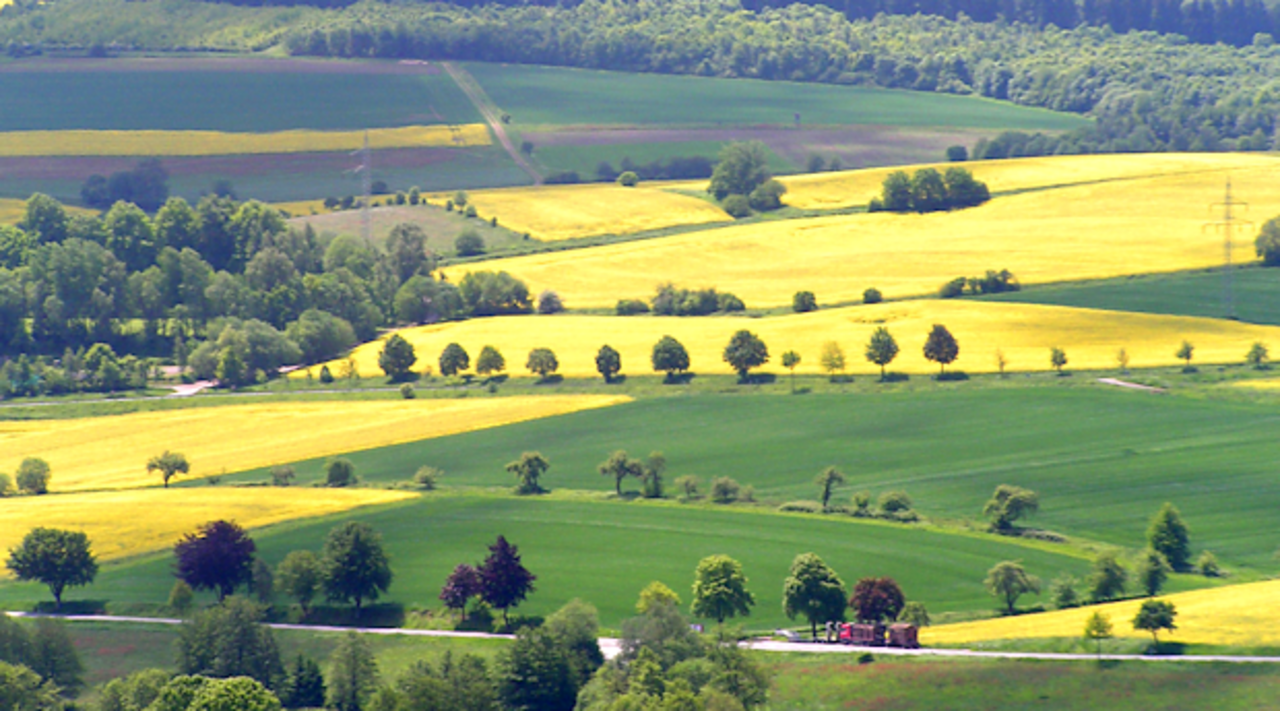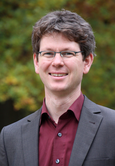Project
GHG-Europe

GHG-Europe - Greenhouse gas management in European land use systems
Almost the entire European land cover is used to produce crops, meat and wood. In view of the changing climate it is especially important to know how much of the greenhouse gases are released into the atmosphere or fixed in biomass and soil by forest and agriculture. One of the largest European research efforts for elucidating these mechanisms is the FP7 project “GHG-Europe” coordinated by the Thünen Institute of Climate-Smart agriculture. The collaborative project involves 41 institutes from all over Europe.
Background and Objective
The ambitious aim of the project is to establish a greenhouse gas budget for Europe, including the order of magnitudes of various greenhouse gas sources and sinks, their regional distribution, and their temporal dynamics. To this end the European Union provides almost 7 million €. National and university funds contribute add about 12 million €. One aim of the project is to separate human-related factors like land use from natural factors like weather and climatic variability. Additionally, GHG Europe tries to answer questions like which ecosystems will react most sensitive to climate changes? Which options are available in agriculture and forestry management to keep carbon sinks and minimize greenhouse gas emissions?
For the first time, all three major greenhouse gases are investigated jointly with a comprehensive approach for Europe. The project has a background in the United Nations Framework Convention on Climate Change and ongoing negotiations for a post-Kyoto agreement for a commitment to significant reduction of greenhouse gas emissions. GHG-Europe will allow to produce a total climate budget that includes not only the positive sinks of the biosphere but also the greenhouse gas emissions produced by land use.
Approach
The project will integrate results from various national and international climate research projects for a comprehensive assessment. Measurements from more than one hundred continental stations distributed across all European climatic regions and ecosystems will be used to assess the contribution of different land uses to the emissions and sinks of the three most important greenhouse gases carbon dioxide (CO2), nitrous oxide (N2O), and methane (CH4). Long-term measurements from all over Europe will be combined with initiate greenhouse gas measurements in regions that have been researched little so far. This includes east European forests and Mediterranean shrubland. The measurements of this network of stations will be used in computer models to project future greenhouse gas budgets under a changing climate. The models also include socio-economic effects to address interactions between economic development, land use, and greenhouse gas emissions.
Results
Updates of the European carbon and greenhouse gas budget confirmed the previously published values. Europe remains a net carbon sink, which is more than compensated by N2O and CH4 emissions from agriculture. These updates do not fully include yet the greenhouse gas (GHG) sources from drained organic soils (peat soils). Despite a high uncertainty in the area and drainage status anthropogenic emissions from drained organic soils are likely underestimated by at least factor two or three in the European greenhouse gas inventory under the United Nations Framework Convention on Climate Change.
For the first time, European estimates have been made based on fully consistent in spatio-temporal driver fields with common time periods, frequency, and spatial resolution. New driver fields have been developed for important direct and indirect human drivers: nitrogen deposition, agricultural management, and age class distribution in forests. The driver fields are publically available for further use at the project database.
The classical approach to constrain the terrestrial carbon and greenhouse gas budget by independent top-down and bottom-up methods has again been successfully applied at European scale. The application at regional scale, however, revealed considerable uncertainty in the atmospheric top-down method so that so far, only the bottom-up method was considered robust to monitor success in GHG mitigation at regional scale.
Management effects override the impact of interannual variability in climate drivers on the ecosystem carbon balance when more than 20% of the net primary production is harvested. This threshold is likely exceeded in most land-use systems and regions of Europe except for pastures and young forests.
Land-use changes have occurred on 25% of the European land area since 1900 and on 15% since 1950. There is a strong asymmetry in soil reactions to land-use change. Soils lose carbon fast within 20 years but take more than 100 years to recover. The long legacy of land-use change effects on soil carbon may mask effects of recent management changes.
Sensitivity and attribution analyses based on data synthesis and modelling agreed in the most effective options for GHG mitigation. They confirmed previous scientific findings and policy recommendations for mitigation measures in croplands, grasslands, forests and managed peatlands.
Scenarios of future carbon and GHG emissions were developed. They demonstrate the importance of consistent cross-sectoral policies for agriculture, energy and other fields that affect land-use decisions so that clear incentives for low emission land-use systems can be set up. Land-use decisions, economic and political drivers will remain the dominant drivers of European carbon and greenhouse gas fluxes in the coming decades.
Thünen-Contact

Involved Thünen-Partners
Involved external Thünen-Partners
- Institut national de recherche pour l’agriculture, l’alimentation et l’environnement (INRAE)
(Paris, Toulouse, Montpellier, Avignon, Ivry-sur-Seine, Clermont-Ferrand, Rennes, Thiverval-Grignon, Dijon, Orleans, Bordeaux, Pierroton, Frankreich) -
Swedish University of Agricultural Science - SLU
(Uppsala, Lysekil, Schweden) -
University College Dublin
(Dublin, Irland) - University of Copenhagen
(Kopenhagen, Helsingoer, Dänemark) -
Centre d'Etudes Spatiales de la BIOsphère (CESBIO)
(Toulouse, Frankreich) -
University of Aberdeen
(Aberdeen, Großbritannien (inkl. Nordirland)) -
Freie Universität Amsterdam
(Amsterdam, Niederlande) -
Forest Research and Management Institute - ICAS
(Bukarest, Ilfov, Rumänien) - Wageningen University & Research (WUR)
(Wageningen, Niederlande)
Funding Body
-
European Union (EU)
(international, öffentlich)
Duration
1.2010 - 9.2013
More Information
Project funding number: 244122
Funding program: EU – FP7 – Thematic Priority "Environment (including Climate Change)"
Project status:
finished
Publications
- 0
Bouriaud O, Don A, Janssens IA, Marin G, Schulze E-D (2019) Effects of forest management on biomass stocks in Romanian beech forests. For Ecosyst 6:19, DOI:10.1186/s40663-019-0180-4
- 1
Dechow R, Franko U, Kätterer T, Kolbe H (2019) Evaluation of the RothC model as a prognostic tool for the prediction of SOC trends in response to management practices on arable land. Geoderma 337:463-478, DOI:10.1016/j.geoderma.2018.10.001
- 2
Szoboszlay M, Dohrmann AB, Poeplau C, Don A, Tebbe CC (2017) Impact of land-use change and soil organic carbon quality on microbial diversity in soils across Europe. FEMS Microbiol Ecol 93(12):1-12, DOI:10.1093/femsec/fix146
- 3
Erb K-H, Luyssaert S, Meyfroidt P, Pongratz J, Don A, Kloster S, Kuemmerle T, Fetzel T, Fuchs R, Herold M, Haberl H, Jones CD, Marin-Spiotta E, McCallum I, Robertson E, Seufert V, Fritz S, Valade A, Wiltshire A, Dolman AJ (2016) Land management: data availability and process understanding for global change studies. Global Change Biol 23(2):512-533, DOI:10.1111/gcb.13443
- 4
Nyawira SS, Nabel JE, Don A, Brovkin V, Pongratz J (2016) Soil carbon response to land-use change: evaluation of a global vegetation model using observational meta-analyses. Biogeosciences 13:5661-5675, DOI:10.5194/bg-13-5661-2016
- 5
Luyssaert S, Jammet M, Stoy PC, Estel S, Pongratz J, Ceschia E, Churkina G, Don A, Erb K-H, et al (2014) Land management and land-cover change have impacts of similar magnitude on surface temperature. Nat Clim Change 4:389-393, DOI:10.1038/NCLIMATE2196
- 6
Leppelt T, Dechow R, Gebbert S, Freibauer A, Lohila A, Augustin J, Drösler M, Fiedler S, Glatzel S, Höper H, Järsveoja J, Laerke PE, Maljanen M, Mander Ü, Mäkiranta P, Minkkinen K, Ojanen P, Regina K, Strömgren M (2014) Nitrous oxide emission budgets and land-use-driven hotspots for organic soils in Europe. Biogeosciences 11:6595-6612, DOI:10.5194/bg-11-6595-2014
- 7
Poeplau C, Don A (2014) Soil carbon changes under Miscanthus driven by C4 accumulation and C3 decomposition - toward a default sequestration function. GCB Bioenergy 6(4):327-338, DOI:10.1111/gcbb.12043
- 8
Poeplau C, Don A (2013) Auswirkung von Miscanthus-Anbau auf den Bodenkohlenstoff - Entstehung einer C-Sequestrierungsfunktion für die gemäßigten Breiten : [Abstract für]: Jahrestagung der Deutschen Bodenkundlichen Gesellschaft (07.-12.09.2013 in Rostock).
- 9
Dechow R, Gebbert S, Franko U, Kätterer T, Kolbe H (2013) Estimating partition coefficients in the soil carbon model RothC using long term experiments and Bayesian calibration. In: International workshop SOMpatic : Rauischholzhausen, Germany, Nov 20th - 22nd 2013 ; abstracts. p 1
- 10
Don A, Poeplau C, Vesterdal L, Fuchs R, Herold M, Gebbert S (2013) Impact of land-use changes on the European carbon balance. In: Book of abstracts : Open Science Conference ; Greenhouse Gas Management in European Land Use Systems ; 16.-18. September 2013, Antwerp, Belgium. Antwerp: University of Antwerp
- 11
Leppelt T, Dechow R, Gebbert S, Freibauer A (2013) Modelling nitrous oxide emissions from organic soils in Europe. Geophys Res Abstr 15:7421
- 12
Don A, Osborne B, Hastings A, Skiba U, Carter MS, Drewer J, Flessa H, Freibauer A, Hyvönen N, Jones MB, Lanigan GJ, Mander Ü, Monti A, Djoma SN, Valentine J, Walter K, Zegada-Lizarazu W, Zenone T (2012) Land-use change to bioenergy production in Europe: implication for the greenhouse gas balance and soil carbon. GCB Bioenergy 4(4):372-391, DOI:10.1111/j.1757-1707.2011.01116.x
- 13
Poeplau C, Don A (2012) Sensitivity of soil organic carbon stocks and fractions to different land-use changes across Europe. Geoderma 192:189-201, DOI:10.1016/j.geoderma.2012.08.003
- 14
Poeplau C, Don A, Vesterdal L, Leifeld J, Wesemael B van, Schumacher J, Gensior A (2011) Temporal dynamics of soil organic carbon after land-use change in the temperate zone - carbon response functions as a model approach. Global Change Biol 17(7):2415-2427, DOI:10.1111/j.1365-2486.2011.02408.x

![[Translate to English:] [Translate to English:]](/media/_processed_/6/4/csm_titel_CO2Kampagne8_afeea2273e.png)
![[Translate to English:] [Translate to English:]](/media/_processed_/4/1/csm_titel_93px_CO2Kampagne8_9b0f3354d4.png)





